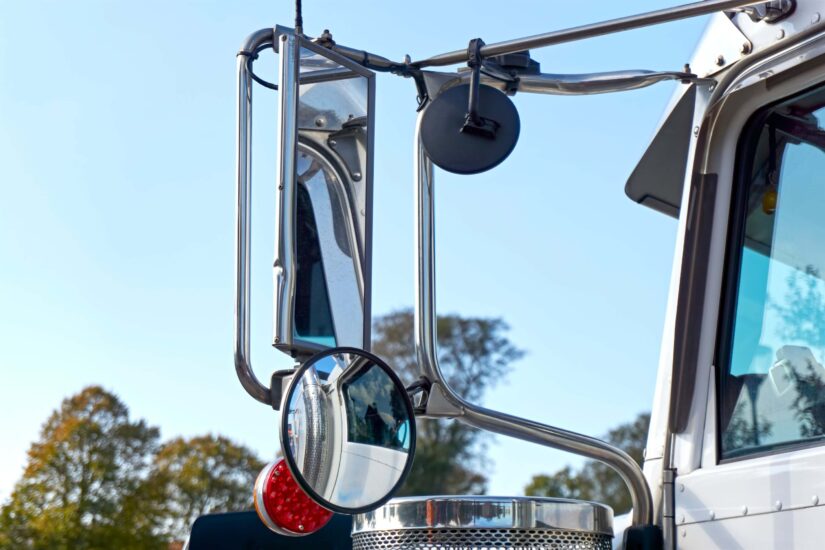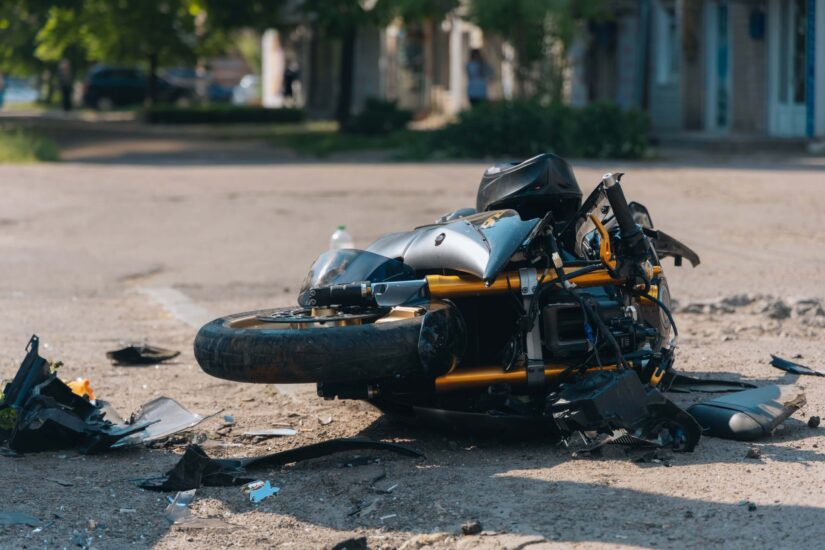
Road users come in different shapes and sizes. The smaller the user, the less visible they become. Motorcycles are often harder to see on the road because of their smaller size and slim profile. They can easily be hidden by larger vehicles or blend in with traffic. This issue is worse during adverse weather conditions or at night. Let’s explore what makes motorcycles so hard to see on the road and how motorcyclists and other motorists can work together to improve visibility and safety.
The Importance of Motorcycle Visibility
Visibility is a critical component of road safety, and it’s even more crucial for motorcycles. Unlike vehicles, motorcycles don’t offer the protection offered by cars. There is no frame or airbags to protect riders from a crash.
Even a minor collision can result in serious injuries, such as traumatic brain injuries and spinal cord injuries. When you get injured in a severe accident, not only do you have to contend with the injuries, but you could also suffer from financial burden. For example, you may suffer from lost wages, loss of earning potential, property damage, and other types of losses. Many of these risks can be reduced or even prevented if motorcycles are more visible to other road users.
Understanding Visibility Issues in Motorcycle Accidents
Blind spot accidents often occur when offending vehicles’ blind spots are not accounted for. Motorcycle riders should be especially mindful of vehicles’ lane position and other drivers’ blind spots to reduce the risk of accidents.
Motorcycles’ smaller size and slimmer profile make them inherently more challenging to spot on the road. Their agility adds to the challenge, allowing riders to maneuver quickly through traffic, which can lead to sudden appearances in drivers’ blind spots.
Every vehicle has some blind spots, which are areas where the driver has no visibility. For smaller cars, the blindspots are typically on the side of the vehicle, partially in the regions that are not covered by the side view mirrors. Larger vehicles, including commercial trucks, can even have more and more significant blind spots. A semi-truck can even have blindspots right in the front of the car, as the height of the truck doesn’t allow the truck driver to have any visibility close to the front. Similarly, the truck driver may not have any visibility in the rear.
Motorcycles, being significantly narrower, can easily slip into these blind spots without drivers realizing it. Being aware of these blind spots is essential for every driver. Before making any moves, it’s important to check your mirrors and glance over your shoulder.
Speed perception can also make motorcycles more difficult to see on the road. Because of their smaller size, motorcycles can appear to move slower than other drivers, making it challenging for other drivers to judge the speed and distance of the much smaller road user. Another key factor in visibility issues for motorcycles is that they can disappear behind other vehicles on the road, significantly taller vehicles such as SUVs and trucks.

Weather-Related Visibility Challenges
Weather conditions can significantly affect visibility. Conditions such as fog, snow, and rain can make it more challenging for drivers to spot motorcycles. While all road users are impacted by poor visibility, motorcyclists are at a higher risk of suffering an accident because of their smaller size.
The worst visibility can often be foggy conditions, where the dense air may drastically reduce visibility. In some cases, heavy rain can also make it challenging for motorists to spot motorcyclists. If you are driving or riding through adverse weather conditions, you should adjust accordingly. Slowing down your speed can give you that extra time to make safe decisions and react to unexpected changes on the road. Always prioritize safety over speed.
Distracted Driving and Its Impact on Visibility
Distracted driving seriously compromises our ability to see what’s happening on the road. When a driver’s attention shifts away, it impacts their awareness and slows their reaction time, making it harder to respond to unexpected situations. The most common forms of distracted driving include eating, texting, and fiddling with the stereo. However, anything that takes your focus away from the road is a distraction. Even daydreaming or engaging in overly involved conversation with the passengers in the vehicle can be considered as distracted driving.
When you are distracted and not focusing on driving, it can lead to “tunnel vision,” where you only see what’s directly in front of you and, as a result, have limited visibility of everything else. For example, when you are distracted behind the wheel, you may not notice the pedestrian who just stepped off the curb to cross the road or the sudden changes in traffic flow. This limited visibility due to distraction can lead to serious accidents.
That brand of tunnel vision may also manifest in drivers operating their vehicle in the form of mental “auto-pilot,” where they are looking out for other cars only (horizontal ques) while inadvertently neglecting to “register” vertical ques, such as motorcycles, pedestrians, bicyclists, scooters, skateboards, baby strollers, etc. At The Law Offices Of Rosenstock and Azran, in our quest to prove legal fault (liability) for our clients, we thoroughly investigate the perceptions of the offending driver, along with the distractions that contributed to their omissions. If we determine that the distractions fall into those categories recognized in the controlling statutory and case law, we may seek punitive damages, as well as compensatory damages, from the offending driver.
Legal Aspects of Motorcycle Visibility in Accident Cases
Motorcycle riders have the same rights and responsibilities as other road users. This means that they must uphold their duty of care toward other road users, and if they get hurt due to the negligence or wrongdoing of others, they have the right to seek compensation for their damages. Determining liability in accidents that involve visibility issues can become complex. Several factors need to be considered, including whether any party failed to notice poor visibility due to negligence.
For example, if a truck driver changes lanes without checking its blind spots, it could be held liable for the accident. In accidents involving changing lanes, the other party could also be partially at fault if they lingered in the blind spot unnecessarily. Changing-lane accidents often result in some uncertainty about who was at fault or had poor visibility, which can usually become a contention in insurance claims and lawsuits.

When it comes to determining fault in an accident, the concepts of contributory and comparative negligence come into play, and they can vary depending on where the accident occurs. Some say it follows a comparative negligence system, where the compensation is adjusted based on the level of fault. For example, the party that is 30% at fault would only receive 70% of the damages awarded.
Other states may need to be more lenient towards at-fault parties, as they follow a contributory negligence system. Under this system, if any party is even slightly at fault, they may not be able to recover damages for their losses.
Motorcyclists should avoid riding in someone’s blind spot as their smaller size could be a significant factor in such accidents. The risk of collision with other vehicles is higher during lane changes.
What Should I Do After a Motorcycle Accident?
As motorcycle accidents often result in injuries, your first step should be to seek medical attention. Call 911 and let the emergency responders know about the accident, including the location of where it happened. Even if you feel fine, it’s essential to get checked out, as some injuries might not be immediately apparent. Injuries such as whiplash can take some time to become evident. The emergency responders can also help other parties injured in the accident.
You will need evidence to recover compensation for your losses. Start gathering readily available evidence from the crash site. This includes contact information for any eyewitnesses who are willing to provide a statement or testify on how the accident happened. You should also take photos of the conditions, injuries, and property damage. If adverse weather conditions cause poor visibility, take pictures or videos to capture what the crash site looks like.
When taking photos of the accident scene, pay special attention to things that might have affected visibility, like the weather, road signs, and any obstacles around. These details can help you prove how visible played a role in the accident.
Even for minor accidents, you should never flee the accident site, as that could be considered a hit-and-run offense. Wait for the law enforcement officials to arrive. In most cases, they will make an incident report of the accident, which can play a crucial role in a claim or lawsuit. You should also exchange your contact details and auto insurance information with other parties involved in the accident.
Once you have taken all the steps at the crash site, you should notify your insurance company about the accident. Handling the aftermath of a motorcycle crash can get overwhelming, especially if you suffered severe injuries or if there is a dispute about who was at fault. It is best to get an attorney involved in the process so you have legal guidance and representation through each step of the process.
How The Law Offices of Rosenstock and Azran Can Help with Motorcycle Accident Cases
Motorcycle accidents involving visibility issues can be particularly challenging. At The Law Offices of Rosenstock and Azran, we can help you navigate the process. Our law firm focuses exclusively on personal injury law and can help you get full and fair compensation for your losses.
With our extensive knowledge of motorcycle laws and our commitment to providing personalized legal support, we can help you build a strong case. We have a proven track record in all types of car accidents, including motorcycle accidents and truck accidents. Please call us to schedule a free consultation with our personal injury lawyer. In our initial consultation, our legal team will review your case to guide you on how we can help protect your rights and navigate the complexities of your motorcycle accident.










